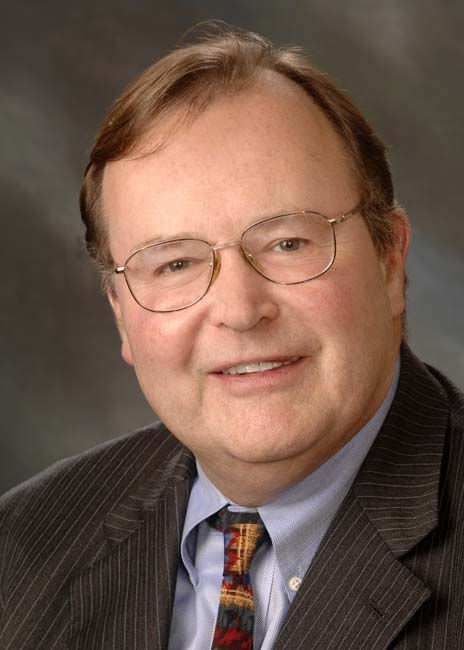
David Cowles
Oct 15, 2022
The role of the artist is to challenge “common sense,” to point out the unrecognized assumptions that underpin naïve realism and to suggest certain directions we might travel in pursuit of deeper truth.
All art forms have a fascination with alterity, the idea of the other. Many 20th century painters explored this idea in depth. Wassily Kandinsky (1866 – 1944), however, stands out as a painter who devoted his entire career to the exploration of other worlds, and who developed a tool kit and a language to help us continue that exploration.
It’s 1910 and a young Russian, Wassily Kandinsky, is starting to paint. Even in his earliest works, Kandinsky explores worlds that differ from the world of ordinary experience. Part dream, part hallucination, part fantasy, Kandinsky’s early works preserve the identity of the subject and the structure of the ground, but he makes the two nearly interchangeable, and he invests the whole with a dynamism, a palette and a perspective unlike anything we would ever call mundane.
The name of a 1911 work, Romantic Landscape, sums up this early period. As Kandinsky’s work matured, his landscapes became more abstract, and the relationship of colors and forms became the real subject of his painting.
Then in 1913, in Painting with White Border, Kandinsky experimented with a new technique. He situated his imagined world within another, wider world by means of a “white border.” While he is not yet exploring substructural worlds, he is moving conceptually toward the recognition that the world of subject-object, space-time, and sense perception is situated in a much broader cosmos.
Later that same year, Kandinsky began to paint canvases without any representational features. Light Picture and Black Lines begin a new era. No longer is Kandinsky abstracting from the world of everyday experience and reformatting that world according to a new logic and a new aesthetic; now he is creating (or unveiling, aletheia) entirely novel worlds via paint.
In 1919, he painted White Oval, a rounded rhombus containing an entire physics of fanciful forms, situated within a dark, vague border that suggests nearly empty space. This world is like a womb, self-contained within the larger body aka ’reality’. Modern cosmologists might recognize this as a bubble universe, an apparently self-contained and finite universe that is really just one “bubble” in a foam of bubbles (all universes, similar or not so similar to our own).
During this period, Kandinsky regularly organizes paintings around irregular geometric shapes. For example, Red Oval (1920) depicts what cosmologists might call a brane, a space situated within a higher dimensionality. In Red Oval, all the inhabitants link to the brane (or to something else that links to the brane). Some objects link to the brane at one end point only, others at both end points; does this remind you of today’s strings?
Objects may equally well link to either side of the brane, or they may run through the brane like arrows. All the activity in this world takes place in or just above/below this brane. Compared to the higher dimensional universe in which it is situated, the brane is something like a pancake.
Beginning in 1922, Kandinsky’s paintings show the influence of the Bauhaus. However, he incorporates that influence into his own style. In the Black Square (1923), he inserts the architectural forms of Bauhaus into his brane-world.
During this period, Kandinsky’s painting becomes increasingly dynamic, and he begins to explore motion as a “thing in itself.” In Yellow Accompaniment and One Center (1924) the subject of the piece is dynamics. The colors, forms, and constructed objects just serve to make otherwise invisible ‘motion’ visible.
Remember Zeno’s Paradox, the work of an early Greek philosopher of the same name. Zeno demonstrates that the phenomenon of motion is not possible in any world where the axioms of arithmetic apply. Zeno’s radical conclusion, attacked anew by each generation of mathematicians and logicians, remains unrefuted…2,500 years later. Kandinsky seems to accept both Zeno’s conclusion and the challenge it poses.
Kandinsky’s canvasses illustrate the reality of motion, but only in worlds where the axioms of arithmetic do not hold.
Using paint, Kandinsky offers us a syllogism: (1) Motion can only be real in a world where the rules of arithmetic do not hold; (2) Motion is real; therefore, (3) the rules of arithmetic do not hold. (I know a bunch of third graders who will be very happy to hear this news!)
Accent in Pink (1926), for example, depicts a brane-world, inhabited not by shapes but by bursts, eruptions of color. Kandinsky paints these bursts in cross-sections so that the viewer actually sees the eruptions in process. He anticipated by decades the concept of a ‘block universe’ where time consists of a sequence of slices off the block. Can you say, “Cheese?”
Music had a profound influence on Kandinsky, and his works began to take on the quality of musical composition rather than architecture. At the same time, Kandinsky began to explore the semantic nature of artistic forms.
In Levels (1929), Kandinsky creates a hieroglyphic language, a kind of Rosetta Stone, and adds a grid to help the “reader” decipher the “text.” Striped (1934) and Delicate Accents (1935) continue this trend, but the apex of this period may be Succession (1935), which presents symbols on a grid reminiscent of musical notation. In the context of other worlds, Kandinsky is here exploring the notion known today as “It from Bit” (Wheeler). Reality is information. It is essentially a code; perceptions are merely clues to that code.
But it is with Movement 1 (1935) that Kandinsky's embrace of other-world cosmology ripens fully . This canvas presents a fantastic assemblage of branes, self-contained mini-verses, hieroglyphs and geometric forms of varying dimensionality linked by strange, string-like objects running throughout. From 1935 on, Kandinsky’s works are predominantly characterized by these elements.
Until recently, philosophers exploring the idea of ‘other worlds’ were limited by the notion that any viable world must be self-consistent. Beginning with Movement 1, Kandinsky rejects that assumption. After all, Emerson wrote that “…Consistency is the hobgoblin of little minds,” and literally no one has ever accused Kandinsky of having a ‘little mind.’
Moving forward, Dominant Curve (1936) presents a chaotic variety of topologies, somehow co-existing harmoniously on the representational plane of a canvas. It suggests that a multiplicity of inconsistent realities may lie beneath the more routine world we accept as real. Those of us raised on Heisenberg, Godel, Bell, and Feynman will not find any of this the least bit surprising. Might it be that the treasured consistency we claim to find in our world is put there by us?
Grouping (1937) continues to explore this theme; it explicitly shows these incongruous regions co-existing and in some strange way, perhaps even using that incongruity to reinforce one another. Could it be the case that meta-reality is the consistent interaction of many worlds, at least some of which lack internal consistency?
Capricious Forms (1937) situates a foreground of perpetually moving and morphing organic entities in a static, rectilinear background. Kandinsky is using the elements of his multi-verse to construct a universe that reminds us, at least in some ways, of our familiar world. He may be suggesting that our rectilinear world is emergent from, or a special case of, this sub-structural multiverse.
All of which leads naturally to Thirty, another 1937 piece, that suggests 30 unique solutions, some rectilinear, some organic, some musical, some hieroglyphic to the basic problems of ontology. Like M Theory, Thirty suggests that there may be more than one right answer to the riddle of cosmology.
Finally, Around the Circle (1940) begins with a somewhat typical assemblage of unexpected ontological entities, all approximately coplanar. But then it adds a window which suggests a sort of “wormhole,” an escape into another far-off multiverse which is itself a collection of varied, yet perhaps subtly different, entities. From Kandinsky’s window, one can see into Carroll’s Looking-glass World. With this work, Kandinsky suggests that dimensional democracy may not only exist within worlds but also between worlds; the process of deconstructing classical reality could turn out to be infinitely regressive.
Kandinsky avoids the temptation to offer his own systematic ontology; that is not the job of the artist. The role of the artist is to challenge “common sense,” to point out the unrecognized assumptions that underpin naïve realism and to suggest certain directions we might travel in pursuit of deeper truth. This Kandinsky did, brilliantly!
At one time, it was in vogue to classify worlds as “real” or “imaginary.” For many centuries, Parmenides' “Way of Seeming” was misunderstood as an illusion compared to his eminently real “Way of Truth.” But that facile way of thinking won’t cut it anymore!
Today, we know that we have to take all worlds into account in order to understand the universe. As we continue on this intellectual journey, we would be well advised to return to Kandinsky for inspiration. His paintings provide us with rich and varied models of alterity.
Image: Movement I. (1935). Wassily Kandinsky. Public Domain

David Cowles is the founder and editor-in-chief of Aletheia Today Magazine. He lives with his family in Massachusetts where he studies and writes about philosophy, science, theology, and scripture. He can be reached at david@aletheiatoday.com.
Do you like what you just read? Subscribe today and receive sneak previews of Aletheia Today Magazine articles before they're published. Plus, you'll receive our quick-read, biweekly blog, Thoughts While Shaving.






